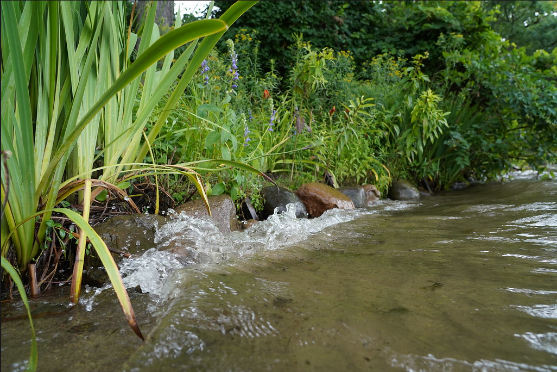I Used to Mow There … and Now it’s Gone
"See that tree. I used to mow two passes between that tree and the shoreline. Now the tree is in the water." It's a common observation we hear from shoreland landowners. The erosion itself is slow enough that we can't see it immediately. But over time it becomes clear that erosion was happening all along. One measure of land lost is recalling how we used to use an area.
It's striking that the most common measure of erosion is "where we used to mow." Perhaps, it's part of the cause. As a general rule, many grasses have roots as deep as the plant is tall. That means mowed turf has 1-2" deep roots that afford little erosion protection.
As a simple way to slow shoreline erosion, consider an unmowed buffer at the water's edge. It's understood that this may not be feasible in dock, beach, or other active use areas. But in other areas, just let it grow or intentionally plant it with desirable native vegetation. ACD staff can help. Just give us a call.
